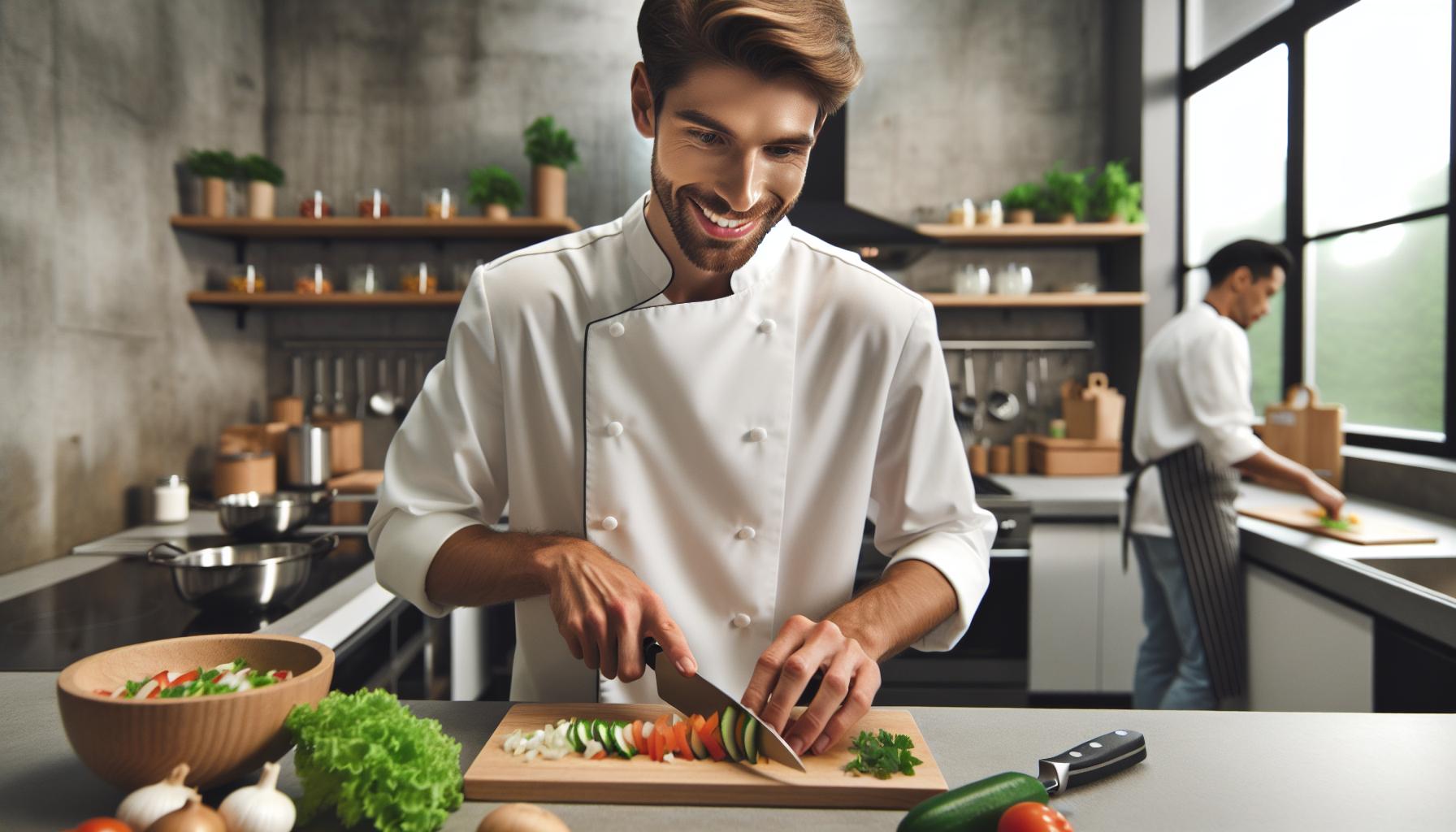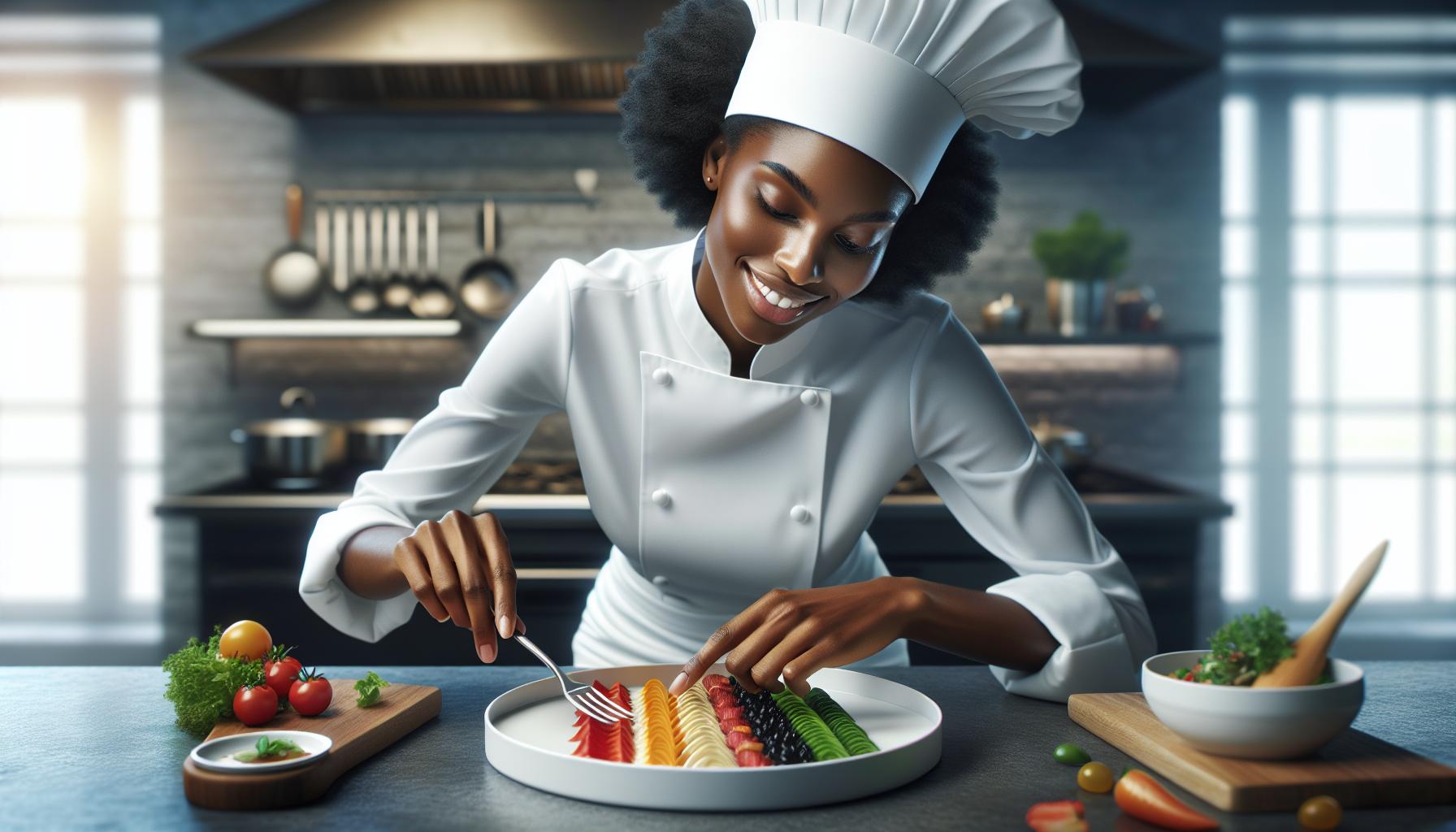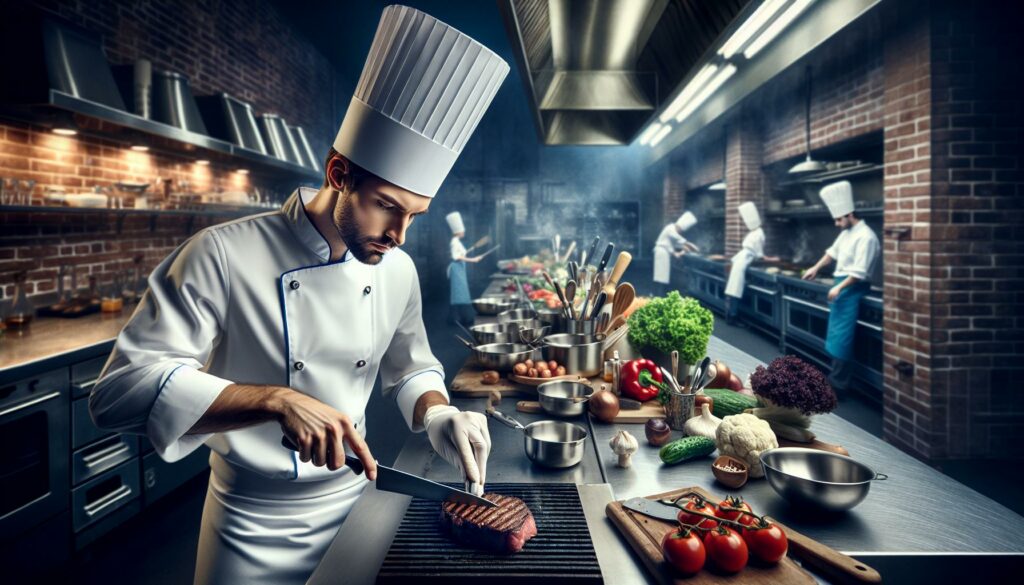Ever wondered what makes a chef’s eyes light up like they’ve just discovered a secret ingredient? It’s not just about tossing ingredients into a pan – culinary arts simply means the art of cooking. Think of it as the perfect blend of science and creativity where measuring cups meet imagination.
In a world where microwave dinners compete with gourmet meals, culinary arts stands as the sophisticated cousin of everyday cooking. It’s where simple ingredients transform into stunning masterpieces and where “dinner” becomes an experience. Whether it’s mastering the perfect sear on a steak or creating intricate pastry designs, culinary arts elevates cooking from a basic necessity to an exquisite form of expression.
Culinary Arts Simply Means the Art of ______.
Culinary arts means cooking – but with an elevated approach that transforms food preparation into an art form. The term encompasses the mastery of food science, cooking techniques, flavor combinations and artistic presentation.
Professional chefs demonstrate culinary arts through:
- Precise knife skills for consistent cuts
- Temperature control for optimal cooking
- Flavor balancing with herbs and spices
- Creative plating techniques
- Menu development and recipe creation
Culinary arts combines technical expertise with creative expression to produce exceptional dining experiences. This field integrates elements from multiple disciplines:
| Core Components | Description |
|---|---|
| Food Science | Chemical reactions, cooking methods, ingredient properties |
| Nutrition | Balanced meals, dietary requirements, portion control |
| Business | Cost management, inventory, kitchen operations |
| Design | Color theory, plating aesthetics, food photography |
Expert culinary artists understand how ingredients interact based on their chemical properties and cooking methods. They manipulate these elements to create specific textures, aromas and visual presentations that engage multiple senses.
The culinary arts field extends beyond restaurant kitchens to include:
- Food styling for media
- Research and development
- Catering services
- Food education
- Restaurant consulting
Each specialization requires deep knowledge of food preparation techniques paired with artistic vision. Professional culinary artists study both classical methods and modern innovations to expand their creative capabilities.
The Essential Components of Culinary Arts

Culinary arts integrates multiple core elements that combine technical expertise with creative expression. Each component requires mastery to achieve professional excellence in the culinary field.
Food Preparation and Cooking Techniques
Professional culinary arts demands mastery of specific preparation methods including julienne cutting double 1/8-inch thick strips mise en place organization accurate knife skills. Temperature control plays a central role with specific techniques like:
- Sautéing at 350-375°F for proper caramelization
- Braising tough cuts at 300°F for 3-4 hours
- Roasting proteins at precise temperatures (145°F for medium-rare beef)
- Tempering chocolate between 88-90°F for glossy finish
Expert chefs execute classic French mother sauces béchamel hollandaise espagnole plus contemporary fusion variations. Advanced plating techniques incorporate height texture contrast balance through careful component placement.
Ingredient Selection and Flavor Combinations
Ingredient selection focuses on quality seasonal produce premium proteins fresh herbs spices. Expert chefs understand complementary flavor profiles:
- Sweet balances with acidic (honey lemon)
- Umami enhances with salt (parmesan mushrooms)
- Bitter pairs with fat (dark chocolate cream)
- Spicy mellows with sweet (chili mango)
Premium ingredients demand proper storage methods:
- Herbs stored upright in water at 40°F
- Dry goods in airtight containers below 70°F
- Fresh fish packed in ice below 40°F
- Produce separated to prevent ethylene exposure
Chefs source ingredients based on peak seasonality regional availability sustainable practices authentic cultural origins.
The Creative Side of Culinary Arts

Creative expression in culinary arts transforms cooking into a multisensory experience. Expert chefs combine technical mastery with artistic vision to craft innovative dishes that engage sight, smell, taste, and texture.
Plating and Food Presentation
Food presentation elevates dining into a visual art form through strategic placement of ingredients. Professional chefs create height variations using stacking techniques, negative space placement, and sauce designs. Color combinations enhance visual appeal through complementary ingredients like purple beets against yellow saffron rice. Texture contrasts add dimension through elements such as crispy garnishes atop smooth purees. Professional plating incorporates geometric patterns, asymmetrical layouts, and focal points to draw attention to key ingredients.
Menu Development and Innovation
Menu creation combines artistic vision with market research to craft unique dining experiences. Chefs analyze flavor profiles, seasonal ingredients, and culinary trends to develop signature dishes. Creative menu engineering incorporates elements like temperature contrasts, textural variations, and unexpected ingredient pairings. Innovative techniques transform familiar ingredients into novel presentations through methods like spherification, smoke infusion, or deconstructed classics. Menu development cycles adapt to seasonal changes while maintaining consistent quality standards through standardized recipes, portion control specifications, and precise costing formulas.
Professional Standards in Culinary Arts

Professional culinary arts adheres to strict industry standards that ensure consistency, safety, and excellence in food preparation. These standards form the foundation of successful kitchen operations and exceptional dining experiences.
Kitchen Organization and Management
Kitchen organization follows the brigade system with clear hierarchies, roles, and responsibilities. Each station operates as a specialized unit: garde manger handles cold preparations, saucier manages sauces and sautéed items, and pâtissier creates desserts. The mise en place system organizes ingredients, equipment, and workspaces for maximum efficiency. Professional kitchens implement standardized recipes, portion control measures, and inventory management systems to maintain quality control. Time management protocols ensure synchronized service delivery, with specific preparation schedules for different menu items. Equipment placement follows workflow optimization principles, creating designated zones for prep work, cooking, plating, and sanitation.
Food Safety and Hygiene
Food safety protocols include temperature monitoring of storage units, proper food handling procedures, and regular sanitation schedules. Professional kitchens maintain separate cutting boards, utensils, and preparation areas for different food types to prevent cross-contamination. HACCP guidelines govern critical control points throughout food storage, preparation, and service. Staff members complete food safety certification programs and follow strict personal hygiene standards, including proper hand washing procedures and clean uniform policies. Regular health inspections ensure compliance with local regulations, while documentation systems track food storage temperatures, cleaning schedules, and safety procedures.
Modern Trends Shaping Culinary Arts
Contemporary culinary arts embraces innovation through emerging technologies, sustainable practices, and diverse cultural influences. These trends redefine traditional cooking methods while maintaining the core principles of culinary excellence.
Global Fusion and Cultural Integration
Modern chefs integrate diverse culinary traditions to create innovative fusion dishes that transcend geographical boundaries. Traditional Japanese techniques combine with French cooking methods to produce dishes like miso-glazed duck confit or wasabi-infused beurre blanc. Korean flavors appear in Mexican street tacos with ingredients like gochujang aioli or kimchi slaw. International ingredients stock professional kitchens, from Mediterranean za’atar to Latin American aji amarillo peppers. Social media platforms accelerate this cultural exchange, enabling chefs to share techniques across continents. Restaurant menus showcase this integration through dishes that blend multiple cultural elements while respecting traditional preparations.
Sustainable and Responsible Cooking
Professional kitchens embrace eco-conscious practices through zero-waste cooking initiatives and local sourcing partnerships. Chefs implement root-to-stem cooking techniques, transforming carrot tops into pesto or using fish bones for stock. Restaurant gardens provide fresh herbs and vegetables while reducing transportation emissions. Digital inventory systems track ingredient usage to minimize food waste. Plant-based proteins feature prominently on menus, offering alternatives like mushroom-based steaks or jackfruit pulled pork. Sustainable seafood certification guides purchasing decisions for marine ingredients. Composting programs convert kitchen scraps into fertilizer for local farms, creating circular food systems.
Embrace Sustainability
Culinary arts represents the perfect fusion of technical mastery and creative expression in food preparation. It’s a field that demands dedication to both scientific precision and artistic innovation while maintaining the highest professional standards.
Today’s culinary landscape continues to evolve through technological advancements sustainable practices and diverse cultural influences. As the industry grows professional chefs must balance traditional techniques with modern innovations to create exceptional dining experiences that captivate all senses.
The future of culinary arts lies in its ability to adapt celebrate diversity and embrace sustainability while honoring the fundamental principles that transform cooking into an art form.

